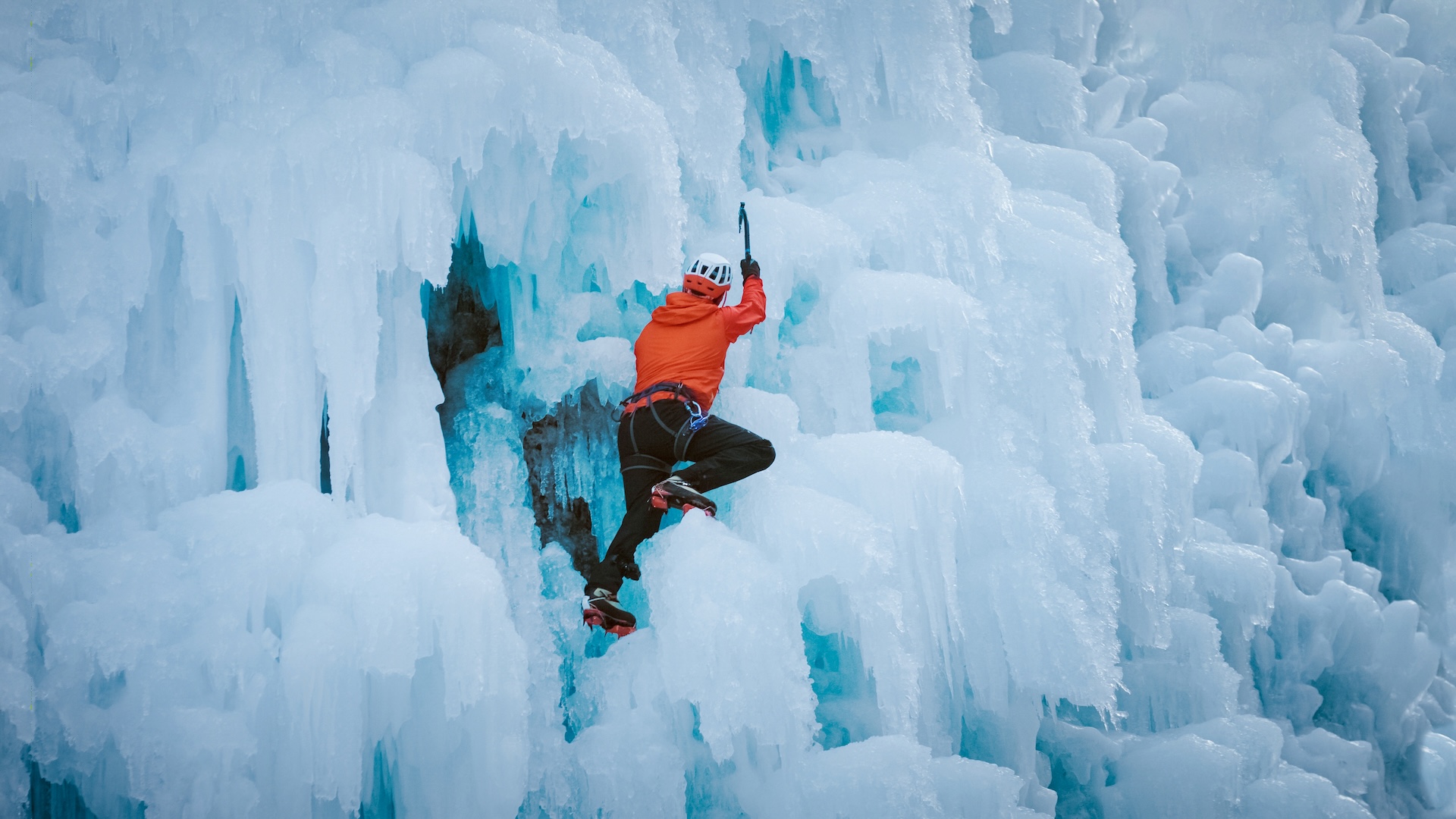About this course
The Rjukan Ice Experience is designed for both beginners and intermediate climbers who want to discover the thrill of ice climbing in one of the world’s best destinations for the sport. The course is fully adapted to your level of experience — whether you’re taking your first swings with an ice tool or looking to refine your technique and climb more confidently on your own.
Throughout the course, you’ll learn essential movement skills, how to use ice tools and crampons efficiently, belaying and safety systems, as well as how to evaluate ice conditions. Our experienced guides will ensure a safe and supportive learning environment where you can challenge yourself and progress at your own pace.
By the end of the course, you’ll have the knowledge, skills, and confidence to plan and enjoy your own ice climbing adventures safely.
Day 1 – Getting started on ice
Your first day begins with a short introduction and equipment check. We’ll go through ice climbing gear, safety routines, and basic movement techniques on easy terrain. You’ll learn how to use crampons and ice tools efficiently, practice balance and footwork, and get familiar with belaying and rope handling.
The focus of the day is to build confidence and a solid foundation of movement on ice. We’ll spend plenty of time climbing and practicing new skills under close supervision from your guide. By the end of the day, you’ll feel comfortable on beginner routes and ready to explore more challenging ice on Day 2.
Day 2 – Building skills and confidence
On the second day, we move on to steeper and more varied ice. You’ll refine your technique, learn efficient movement on vertical sections, and improve tool placement and footwork. We’ll also cover anchor building, rope systems, and basic lead climbing principles — always with a strong focus on safety and control.
Depending on conditions and group progress, we may visit a new climbing area to experience different ice formations and styles. The goal of the day is to consolidate what you’ve learned, gain confidence on more challenging routes, and prepare you to continue climbing independently after the course.
Day 3 – Putting it all together
On the final day, we bring everything you’ve learned into practice. You’ll plan and climb longer routes, focusing on efficient movement, route reading, and managing belays and rope systems. This is your chance to apply your new skills in a real climbing setting, under the supervision and support of your guide.
We’ll also revisit key safety routines, discuss equipment choices, and talk about how to continue training and climbing on your own after the course. The day ends with a debrief and personal feedback session to help you move confidently forward in your ice climbing journey.
Practical info
Transport and meeting points
We start each morning around 09:00 and usually finish climbing by 16:00, giving you about 5–6 hours of climbing every day. The meeting point varies depending on which area we’re heading to, but all locations are within a 15-minute drive from the center of Rjukan.
Participants are responsible for arranging their own transport to and from the climbing area. However, we offer a local Shuttle Service for 750 NOK per day, including drop-off and pick-up at the climbing site. Please contact us in advance if you wish to reserve a spot — spaces are limited.
Prerequisites
You don’t need any prior climbing experience to join this course. Each day is tailored to match your skill level and physical ability, ensuring a safe and enjoyable learning experience for everyone. We have access to a wide range of icefalls with varying difficulty, allowing us to choose the perfect location for each participant’s progress.
Equipment
- Please bring the following personal clothing and items:
- Shell jacket and pants (Gore-Tex or similar, for wind and weather protection)
- At least two pairs of gloves (not mittens) and a warm hat that fits comfortably under a helmet
- Optional: a pair of mittens to keep your hands warm when not climbing
- Insulating layer, such as a down or synthetic jacket, to wear over your shell when resting
- Backpack (30–45 L) for carrying personal gear, food, and extra clothing
- Packed lunch for each day
- Headlamp (for shorter daylight hours during winter)
Weather and conditions
Ice conditions in Rjukan are typically reliable from late December until the end of March. Climbing is sometimes possible as early as the beginning of December, though only in higher areas where the ice forms earlier.
You can expect temperatures ranging from 0°C to –15°C, so it’s important to be prepared for both wet and very cold conditions. Early in the season, daylight hours are shorter — around six hours per day — which means we sometimes start out using headlamps before the sun rises.
